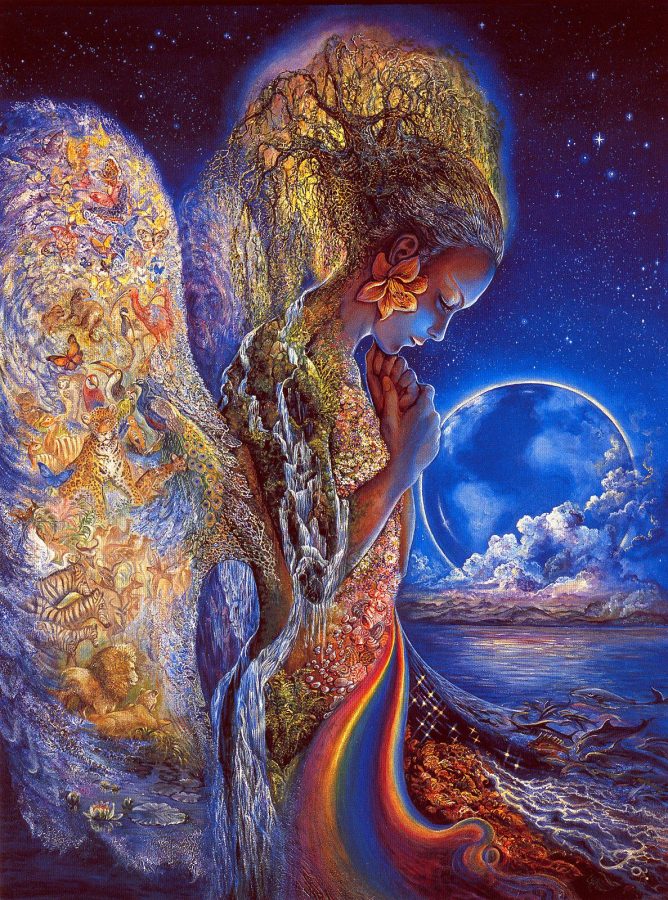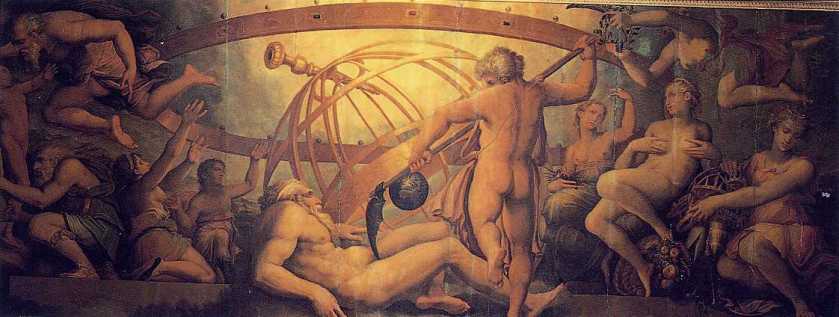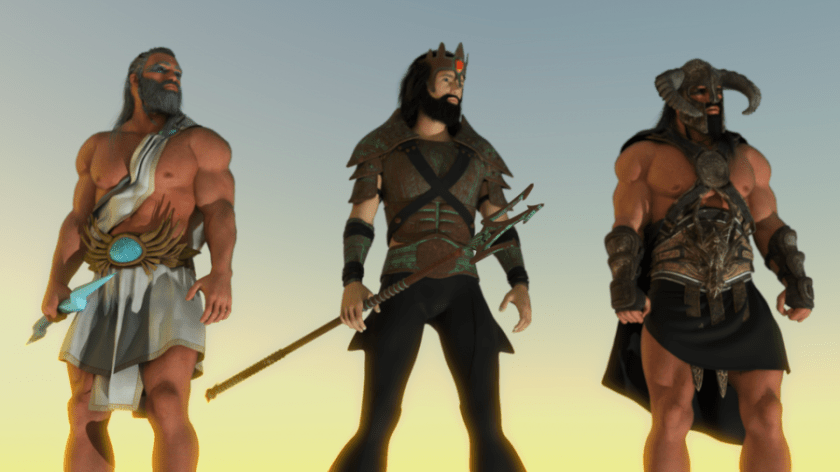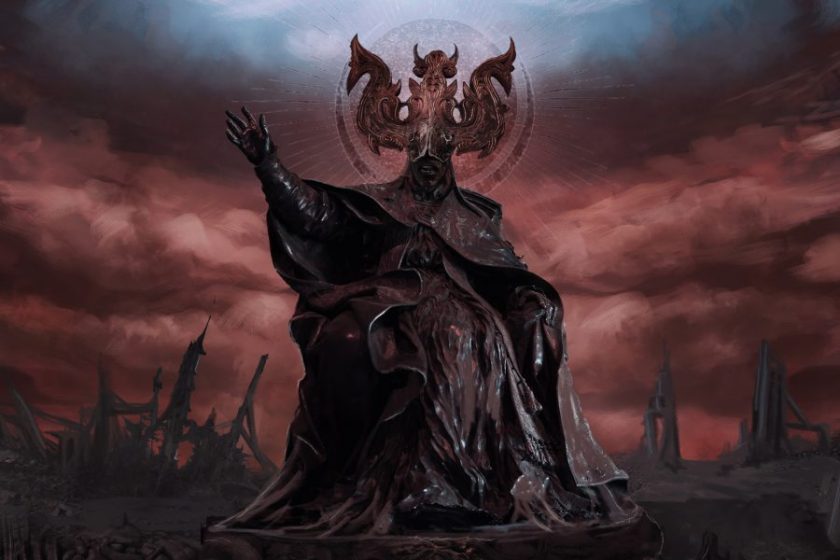In Greek mythology, there is no single original text like the Christian Bible or the Hindu Vedas that introduces all of the myths, characters and stories. Instead, the earliest Greek myths were part of an oral tradition, and their plots and themes unfolded gradually in the written literature.
Homer’s 8th-century BC epics the Iliad and the Odyssey, tell the story of the Trojan War as a divine conflict as well as a human conflict.
The poet Hesiod’s Theogony was the first written story of Greek mythology. The Theogony tells the story of the universe’s journey from nothingness (Chaos, a primeval void) to being, and details an elaborate family tree of elements, gods and goddesses who evolved from Chaos and descended from Gaia (Earth).
At the center of Greek mythology is the pantheon of deities who were said to live on Mount Olympus, the highest mountain in Greece.
They ruled every aspect of human life. Olympian gods and goddesses looked like men and women (though they could change themselves into animals and other beings.
Greek mythology does not just tell the stories of gods and goddesses… Human heroes–such as Heracles, the adventurer who performed 12 impossible labors for King Eurystheus, and was worshiped as a god for his accomplishments.
Pandora, the first woman, whose curiosity brought evil to mankind;
Monsters and “hybrids” (human-animal forms) also feature in the tales: the winged horse Pegasus, the horse-man Centaur, the lion-woman Sphinx and the one-eyed giant Cyclops, unicorns, Gorgons, minotaurs, and dragons of all sorts.
Many of these creatures have become almost as well known as the gods, goddesses and heroes who share their stories.
In Greek mythology, the world began with several primordial Gods. First came Chaos, and then came Gaia, Tartarus, Eros, Erebus, and finally Nyx.
Chaos ~ the creation of the universe or cosmos

Chaos refers to the void state preceding the creation of the universe or cosmos in Greek mythology, or to the initial “gap” created by the original separation of heaven and earth.
Personified as a female, Chaos was the primal feature of the universe, a shadowy realm of mass and energy from which much of what is powerful, mostly negative and dark originated from.
Gaia, also spelled Gaea ~ earth

Gaia is the personification of the Earth and one of the Greek primordial deities.
Gaia is the ancestral mother of all life: the primal Mother Earth goddess.
From Gaia came Uranus, personifying the “sky” or “heaven”) from whose sexual union she bore the Titans (themselves parents of many of the Olympian gods), the one-eyed Cyclopes Giants, and of Pontus (the sea), from whose union she bore the primordial sea gods.
The Titans include the first twelve children of Gaia (Mother Earth) and Uranus (Father Sky or heaven), who ruled during the legendary Golden Age, and also comprised the first pantheon of Greek deities.
Uranus disliked his children and locked them deep within the earth, causing Gaia great pain. So, Gaia devised a plan. Sick of having her children imprisoned, she made a great sickle that she gave to her son Cronus, the youngest and most terrible of her children.
Cronus hid until Uranus came to lie with his mother Gaia. Then Cronus leapt out and sliced off his father’s genitals, which fell into the sea, and produced the birth of Aphrodite, the Giants and others.

Cronus proceeded to release his fellow Titans from prison, and so, the age of the Titans began.
Moreover, Cronus, the Personification of time, and the king of the Titans, imprisoned the one-eyed Cyclopes and the Hecatonchires in Tartarus.
Because Cronus had learned from Gaia and Uranus that he was destined to be overthrown by one of his children, he swallowed each of the children born to him by his Titan sister Rhea.
But when Rhea was pregnant with her youngest child, Zeus, she asked for help from Gaia and Uranus.
When Cronus came to eat his baby son Zeus, Rhea fed him a stone wrapped in swaddling-clothes instead which Cronus swallowed, tricking the Titan, and then Gaia took the child Zeus into her care.
Gaia raised Zeus until he was strong enough to take on his father Cronus. The two fought and upon defeat Cronus was forced to release Zeus’s siblings, starting the war between the Olympus gods and the Titans.
The war lasted 12 years until Zeus freed the cyclopes and the Hecatonchires Giants whom Cronus had imprisoned in order to help him defeat the Titans.
The Cyclopes gifted Zeus his famous thunderbolt, Poseidon his trident, and Hades a Hat of Darkness, tipping the balance of battle.
The Titans, defeated, were thrown into Tartarus, a prison deep within the underworld. And so, started the reign of the gods.
Zeus, Poseidon, and Hades decided to share power. Zeus got the sky, Poseidon the seas, and Hades the dead. Zeus, king of the gods, ruled from his throne on Mount Olympus, home of the immortals, often using his symbols of the thunderbolt and eagle to warn or encourage mortals.

Another Titan, Atlas, was condemned to hold up the celestial heavens for eternity on his shoulders to prevent it from resuming its primordial embrace with the Earth, Gaia.
Other gods could be sentenced to Tartarus as well. Apollo is a prime example, although Zeus freed him.
Tartarus – God of (the abyss or the underworld)

In Greek mythology, Tartarus was both a primordial deity that existed before the Olympians, as well as a name to describe a region of the Underworld ~ (the abyss).
As a god, he was third in rank after Chaos and Gaea.
He was the father of Gaia’s child Typhon, who was considered a monster.
Although the kingdom of Hades was the place of the dead, Tartarus was where ferocious monsters and horrible criminals were banished, or where the gods imprisoned their rivals after a war, such as the prison for the Titans. Some accounts say that the distance between Tartarus and Hades was the same as between the earth and the heaven.
According to Plato’s Gorgias, Tartarus is where souls are judged after death and where the wicked received divine punishment.
Eros, God of Love

Eros meaning “Desire”) is the Greek god of love. His Roman counterpart was Cupid. Normally, he is described as one of the children of Aphrodite, however sometimes he is also described as one of the primordial gods.
Eros was variously depicted as either a beautiful youth or a mischievous boy who embodies sexual power, and a profound artist.
Eros is most commonly represented with a bow and an unlimited number of arrows which he uses to overpower and incite erotic feelings in any mortal or god.
Once, he accidentally scraped himself with an arrow – and that’s how he fell in love with Psyche, who will later become his wife for eternity.
Erebus - God of Darkness & Shadows
Erebus was one of the primordial deities in Greek mythology, born out of the primeval void, Chaos. It was the personification of the deep darkness and shadows.
The word Erebus was also used to indicate a region of the Underworld where the dead would go immediately after dying, and is sometimes used interchangeably with Tartarus.
Nyx - Primordial goddess of the night
Nyx was a primordial deity that preceded the Titans and the Olympians, and was the personification of the night.
She was the daughter of Chaos, out of which all creation originated.
Nyx was married to her brother Erebus and had a number of children, including Aether (Brightness) and Hemera (Day).
Hesiod says that Nyx’s daughter Hemera (Day) left Tartarus just as Nyx (Night) entered it; continuing cyclically, when Hemera returned, Nyx left. This mirrors the portrayal of Ratri (night) in the Rigveda, where she works in close cooperation but also tension with her sister Ushas (dawn).
Hesiod’s description of Tartarus locates the home of Nyx, and the homes of her children.
Later, on her own, Nyx gives birth to Moros (Doom, Destiny), the Keres (Destruction, Death), Thanatos (Death), Hypnos (Sleep), the Oneiroi (Dreams), Momus (Blame), Oizys (Pain, Distress), the Hesperides, the Moirai (Fates), Nemesis (Indignation, Retribution), Apate (Deceit), Philotes (Friendship), Geras (Old Age), and Eris (Strife).
The characters, stories, themes and lessons of Greek mythology have shaped art and literature for thousands of years. They appear in Renaissance paintings such as Botticelli’s Birth of Venus and writings like Dante’s Inferno; Romantic poetry and liberation.
Did you know?
Many products get their names from Greek mythology. Nike sneakers are the namesake of the goddess of victory.
The twelve main Olympians are:
- Zeus - (Jupiter, in Roman mythology): the king of all the gods (and father to many) and god of weather, law and fate
- Hera - (Juno): the queen of the gods and goddess of women and marriage
- Aphrodite - (Venus): goddess of beauty and love
- Apollo - (Apollo): god of prophesy, music and poetry and knowledge
- Ares - (Mars): god of war
- Artemis - (Diana): goddess of hunting, animals and childbirth
- Athena - (Minerva): goddess of wisdom and defense
- Demeter - (Ceres): goddess of agriculture and grain
- Dionysos - (Bacchus): god of wine, pleasure and festivity
- Hephaistos - (Vulcan): god of fire, metalworking and sculpture
- Hermes - (Mercury): god of travel, hospitality and trade and Zeus’s personal messenger
- Poseidon - (Neptune): god of the sea
Other gods and goddesses sometimes included in the roster of Olympians are:
- Hades - (Pluto): god of the underworld
- Hestia - (Vesta): goddess of home and family
- Eros - (Cupid): god of sex and minion to Aphrodite

Love all that you do Brother.
Michael Hunt on JEWtube.
See my PLAYLISTS PLEASE 🤔…